
Interview: Tom Kalinske at the New York Toy Fair
For many SEGA fans, Tom Kalinske is considered to be one of the greatest presidents in SEGA’s history. He helped bring SEGA to the forefront of the video game industry and gave Nintendo a run for their money with the SEGA Genesis. Before SEGA, Kalinske worked for numerous businesses including Matchbox and Mattel, where he helped with the Hot Wheels, Barbie and He-Man franchises.
Tom Kalinske’s name has become synonymous with the New York Toy Fair; the legendary president has been going to the Toy Fair for over 30 years! We sat down with Tom to discuss how he got into the toy business, as well as his ventures with SEGA, Leapfrog and more.
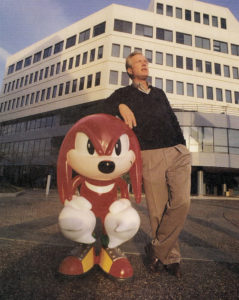 Tom Kalinske: I was working here in NYC. I was working for J. Walter Thompson Advertising Agency. I had a subsidiary that worked on new product development for existing clients. They don’t do this today. The idea was we’ll create a new product for an existing client who we already handle the advertising for. Then we’ll benefit by getting the advertising for the new product we created. We did coffees. We did Chunky frozen eggs rolls for RJ Reynolds Food’s.
Tom Kalinske: I was working here in NYC. I was working for J. Walter Thompson Advertising Agency. I had a subsidiary that worked on new product development for existing clients. They don’t do this today. The idea was we’ll create a new product for an existing client who we already handle the advertising for. Then we’ll benefit by getting the advertising for the new product we created. We did coffees. We did Chunky frozen eggs rolls for RJ Reynolds Food’s.
One day, Miles Laboratories … They had One-a-Day Vitamin. We already handled One a Day Vitamin. They had a children’s chewable vitamin called Chocks. Chocks was square chocolate-flavored vitamin. Bristol-Meyers over in New Jersey brought out animal-shaped, multi-colored, multi-flavored all vitamins called Pals. And Chocks’ business went to hell.
Miles Laboratory said, “What should we do?” I’m in this new product development, so we went out and did a bunch of research. We researched everything you could imagine. In those days, DC Comics were different than they are today and Marvel where there were only a few heroes. We researched policemen and firemen and what have you. We ended up … and all the licenses that were available, and the license we wanted was Snoopy.
But Snoopy was already taken by Interstate Banking for nutritional products, so we couldn’t get it as a license to do vitamins. The second place one was Flintstones. Flintstones had just gone off prime time TV to Saturday morning. So anyway, we go out to Miles Laboratories and we say, “You gotta do Flintstones, here’s what they’ll look like. Here’s the flavors you should do, multi-flavors, blah blah.” Then they said, “You’re out of your minds, get out of here. That’s the dumbest thing we ever heard of.”
SEGA Nerds: They thought it wasn’t marketable?
Tom Kalinske: They thought that because it had gone from prime time to Saturday morning that it was going away. So we ended up going back and doing more research. We went back out, it still won. So finally they said, “Okay, all right, if you insist, we’ll do it but you gotta really come out here and help us do this.” So I spent an awful lot of time in Elkhart, Indiana, where Miles was getting this done. In six months, it became the number one children’s chewable vitamin, and it still is today.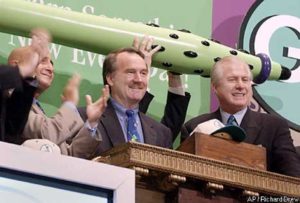
SEGA Nerds: Six months, that’s amazing.
Tom Kalinske: So I had this children’s business experience. Up to then, I didn’t have it. I’d worked on RJ Reynolds food junking frozen egg rolls and things like that. I worked on a coffee for Nestle. But I didn’t have this kind of experience. This was my first children’s product experience and I really liked it.
A head hunter called me up and said, “New York Toy Fair is in town and Mattel is looking for a product manager.” I said, “Sure.” So I came over here … I didn’t come here but I went to 2 Penthouse and interviewed with Mattel.
The Toy Fair was a lot different in those days. First of all, most of it occurred a the Toy Building at 200 Fifth Avenue, but Mattel didn’t want to be in with everybody else. They wanted to be separate. So did Hasbro, they wanted to be separate. So we had our own office down at 2 Pen Plaza. It was huge. The buyers would come in and they physically wrote orders at the show. They don’t do that today, but in those days you wrote orders. We the marketing people would make presentations to the buyers. We’d also hire professional actors and actresses to help us make those presentations for Barbie and Hot Wheels and what have you.
The presentations literally took about three hours to sit through. Then they’d go into a little booth with their salesmen and they’d write an order. That would take like another three hours.
SEGA Nerds: That’s a full day.
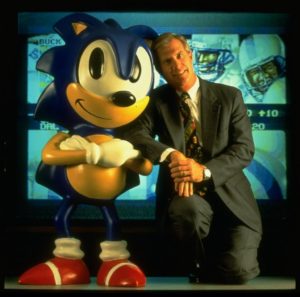 Tom Kalinske: Yeah. Then oftentimes Mattel was so powerful in those days, the head of sales would look at the order and say, “This isn’t good enough.” And tear it up and throw it away and start over. The buyer would have to start over. It was just unbelievable. None of that happens today. It’s much different. It’s not such a big presentation. You can see, you just walk around just trying to get an idea. Then a month from now or two months or three months the buyer will actually write an order for next fall. Completely different situation than it is today.
Tom Kalinske: Yeah. Then oftentimes Mattel was so powerful in those days, the head of sales would look at the order and say, “This isn’t good enough.” And tear it up and throw it away and start over. The buyer would have to start over. It was just unbelievable. None of that happens today. It’s much different. It’s not such a big presentation. You can see, you just walk around just trying to get an idea. Then a month from now or two months or three months the buyer will actually write an order for next fall. Completely different situation than it is today.
It used to be much more theatrical. The presentations, we literally hired professional actors and actresses. That’s where I met my wife. She was an actress here in New York City. You know, when actresses aren’t working, they’re doing trade shows. She was presenting Barbie. She was on a soap opera, Beatrice, Days of Our Lives. She was in three Sinatra movies. She was co-star of Return of the Killer Bees, what have you. So she was presenting Barbie and I kept walking by this really pretty girl. Eventually I ended up asking her out, and that’s how we met and how we got together.
A lot of the people making presentations were professional actors and actresses from the New York theatre community. So really good presentations, very very theatrical and lots of funny stuff.
SEGA Nerds: That sounds like that must have been really fun to be a part of that then.
Tom Kalinske: Yes, it was.
SEGA Nerds: Did you always want to be in the marketing business before the advertising agencies and working with Mattel? Did you have a different thing in mind when you were younger?
Tom Kalinske: I actually got interested in advertising while I was at the University of Wisconsin. I had taken an advertising class with a friend of mine and we both had needed money. We were poor starving students even though tuition those days was only $600.
So we decided to start a magazine. We realized that reaching the male student was a difficult thing to do unless you could afford to advertise on NFL football or that kind of thing, which of course most of the retail advertisers couldn’t do. So we started something called the Wisconsin Man Magazine. We had articles written by kids in the school, journalism, who would want an article published on some topic they were interested in. We did a lot of stuff on how to interview for a job, where to go for a date, where to go for skiing, what kind of trips were inexpensive. That sort of thing. And we had a centerfold – a Badger Beauty. They were clothed, at least they were supposed to be. That’s a funny story too.
Anyway, my partner, John Pellier and I ran up and down State Street in Madison selling advertising to the men’s clothing stores and down the road, the Ford dealership. We went down to the Chicago Merchandise Mart and sold Jade East and Levi Strauss. All kinds of different people for ads. So here we are, two, by then we were juniors in college, and we were making like $10,000 each in 1964. That was a lot of money in 1964 so we really lived well from that point on as juniors in college.
SEGA Nerds: That’s amazing.
Tom Kalinske: But that got me interested in advertising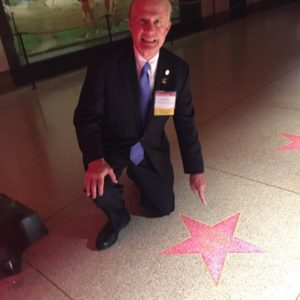
SEGA Nerds: I can see how that would pique your interest. But you probably learned a lot, even as a kid who didn’t know what you were doing. You probably learned a lot of the principles of it.
Tom Kalinske: Well also, we learned every aspect of printing a magazine. I was the photographer. I also wrote some of it, most of the copy. He wrote some. His uncle ran a printing press in Ft. Atkinson, Wisconsin, like 50 miles away. So we’d run down there at night before to print it.
We learned how to set type. We learned how to lithographs. We learned how to do offset. We learned how to do all these printing processes back in those days. His uncle gave us paper at cost and we were in the machines. Well, we actually had to hire his foreman because we couldn’t really run the machines.
SEGA Nerds: You cut out a lot of the production costs and stuff like that.
Tom Kalinske: Yeah. And you’re going to love this. We were both in a fraternity. We had our pledges deliver the magazine to every male student’s room in all the dormitories and all the fraternities. Even some of the big apartment buildings where we knew there were a lot of male students, we covered there. We were printing 10,000 of these things and putting them under the doors of 10,000 male students.
SEGA Nerds: Holy cow.
Tom Kalinske: We had pretty good reach.
SEGA Nerds: So you went the free route with the magazine then?
Tom Kalinske: Oh yeah. We had free labor, pledges, they had to do what we said.
SEGA Nerds: That is awesome. If only it were so easy today to do something like that.
Tom Kalinske: Well, the funny part of that is my partner, John, Vietnam came along. He went to Vietnam, and I went into military intelligence and stayed at (Fort Meade, Maryland) most of the time. A little bit in Frankfurt, Germany, a little bit in Lebanon. After the war, or after he was out of doing his service, he called me up and said, “Hey, let’s do this on every campus in the Midwest.” I said, “Oh, John, we’ve done this. It probably won’t work anymore.” I was in grad school then and kind of busy.
He started it back up and he made a fortune. He did it, obviously, in Wisconsin, Illinois, Michigan, I don’t know if he did Michigan State. Minnesota, Ohio State. He made a fortune doing this and literally ended up, he had this group of college magazines. Obviously, Wisconsin Man was Wisconsin, Ohio State Man was Ohio State. He had great efficiencies by selling it to the Ford dealers out in those areas. He ended up selling it to one of the other bit magazine conglomerates and made a fortune doing it.
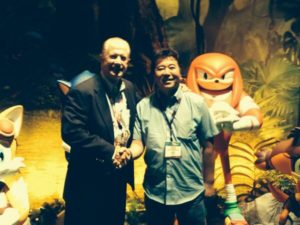 SEGA Nerds: That’s amazing. That was basically the Maxim before Maxim Magazine was out. That’s their demo these days and stuff. That’s really amazing.
SEGA Nerds: That’s amazing. That was basically the Maxim before Maxim Magazine was out. That’s their demo these days and stuff. That’s really amazing.
Tom Kalinske: That’s what got me interested in advertising.
That’s one of the interesting things about this industry. It’s a very collegial industry. People are very, even though we’re fierce competitors in business, we like each other. Many of us like each other and we have a very good relationship. For example, I went from being a product manager at Mattel to president of the toy division to CEO. I competed fiercely with Alan Hassenfeld, emeritus chairman now of Hasbro. But we’re best of friends. We had lunch together yesterday.
It’s that kind of a business. You’re absolutely right, there’s also a lot of movement within the industry. A lot of the people who were marketing or sales people for me at Mattel are now scattered throughout the industry. A lot of them are in senior positions throughout the industry.
The other thing is you get to know … There’s a lot of inventors who invent toy products for the industry. You get to know them at one company, but then go to another company and see them again, go to another company and see them again.
SEGA Nerds: I’ve found that also the case with the industry a lot too. You get these guys who are designers or programmers early on, and now they’re the guys who are running a lot of the companies and stuff too. They become presidents, and they’re really high up in the companies.
Tom Kalinske: Anyway, at Mattel we were over at 2 Pen Plaza for years and years, then we bought our own space down on Sixth Avenue and 18th Street. Then when I left and went to Matchbox, I was back in the 205th Building. I had an office there and worked out of there. Then when I went to SEGA …
I would bring SEGA here even though we were a video game company, because we also had SEGA toys. I don’t know if you remember that. We had quite a few toys. They were more important in Japan than they ever were in the United States. Actually, SEGA used to sell some of their inventions to Hasbro and other people. For example, Furkins, I think, was sold to Hasbro.
We did maybe $20-30 million worth on SEGA toys. So we’d get a little space here during Toy Fair. Again, not at Javitz, but in a place near the Toy Building, and had a tremendous amount of traffic. I saw all my old retail buyer friends.
SEGA Nerds: Did you show off the Genesis too or would it be strictly …
Tom Kalinske: No, we would. As for many of the retailers, the person who bought video games often was the person who bought toys or action figures. There was some connection, some crossover.
That huge group there? That’s all Toys-R-Us buyers of different ilk, different departments. They’re with the guy in the red tie, that’s the chairman of the Toy Industry Association.
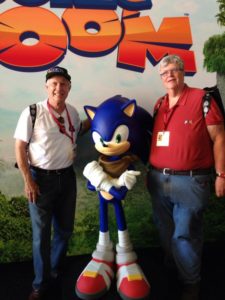
SEGA Nerds: They’re going to be closing their store in Times Square, right?
Tom Kalinske: Yes. I think they already may have done it.
SEGA Nerds: That’s been an iconic landmark there for a long time.
Tom Kalinske: Well, you know they bought FAO Schwartz and they closed FAO Schwartz store on Fifth Avenue as well.
SEGA Nerds: A real shame.
SEGA Nerds: Is it just because the industry is changing? Or politics?
Tom Kalinske: Those locations are so expensive rent-wise, it’s hard for a toy store to make enough profit to make it. Toys-R-Us locations in the suburbs maintain and they probably actually are increasing the number of those stores. But a Manhattan location is just too damned expensive.
SEGA Nerds: I would imagine those locations are more about advertising and getting people to see the products more so than just selling.
Tom Kalinske: That was the original idea. When they first opened the Times Square location, it was clearly … They knew it was going to be a loss there. But over time the losses were greater than they could handle.
SEGA Nerds: It goes back to a time where you guys opened up the little SEGA place outside Walmart. That was one of my favorite little stories in The Console Wars. I had no idea. That book opened my eyes to so many different things about … So many little stories like the story of you going and checking out the [Matchbox] production …
Tom Kalinske: The guy who actually ran our Matchbox business was running it illegally. That was awful. That was so funny. I called my partner, David Yeh back in Hong Kong and I said, “I’m in our manufacturing plant in Spain.” He said, “We don’t have a manufacturing plant in Spain.” I said, “I’m watching machines make what appear to be Matchbox cars and Matchbox packaging and plastic Matchbox garages.” He says, “Tom, you’d better get the hell out of there.”
So anyway. When we formed Leapfrog, talking again about Toy Fair, 1997 we didn’t have any money, really. So we used a distributor here. He didn’t have any space in his showroom. Again, in the 205th Avenue building, so he gave us a window sill. There was a radiator and a window sill and that’s where we put the first three products. We had literally that much space, that was it. We stood there and said hello to retail buyers, “Come on in!” We go them to buy.
SEGA Nerds: Come to our window!
Tom Kalinske: These guys, and none of them [inaudible] the rest of these guys are all newer than that. The buyers for Toys-R-Us in those days bought 50,000 of each of our three products, and that was what got us going.
SEGA Nerds: Wow! That was huge.
Tom Kalinske: By the way, it was all relationship. It would not have occurred if it had not been we were friends. So that’s another thing about this industry. The buyers who you’ve helped over the years will help you in return.
SEGA Nerds: There’s always going to be a time when you’re going to need that, your back gets scratched as well. How much did your experience with Pico and things like that go into some of the stuff you’ve been doing with Leapfrog?
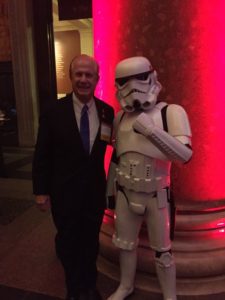
Tom Kalinske: Huge. It’s what really got me interested in using technology in education, was the Pico product. That’s when the light bulb went on, “Oh my God, video game technology can really make educational content more interesting and fun and more engaging and keep the kids with it longer.” I love the Pico product. I left SEGA because Mike Milliken and Larry Ellison offered me a job to run an education technology company. Basically, it was to use this great technology from not just the video game industry but upcoming technologies to improve learning, whether it was kids learning or high school learning or college learning or post-retiree learning. To form companies to take advantage of those possibilities.
So I did. The second company we bought was Leapfrog. It was my friend, Mike Wood, who is a successful lawyer. He had a son who had trouble learning to read so he worked with Lawrence Livermore Labs in Northern California and developed the first product, a phonics desk.
There were plastic letters that were in order, ABCDEFG, but you could take them out and run part of the desk had a little cutout where you’d put a little three or four letter word that had a picture on top of it. So cat had a little kitty cat. Now when you took the C … The C was up in the normal place, ABC. Take the C, put it down over the letter in cat is would go “cuh”. So it was teaching phonic sounds. Same with the A, A went “ah”, the T would go “tah”, then it would say the word “cat”. You just spelled cat.
That was his first invention. He actually came to me at SEGA. That’s how I new him. When I was at SEGA and his brother-in-law is a good friend of mine came to me and said, “Hey, I want to introduce this in the toy industry.” I said, “Mike, it’s a great product.” Well, the other thing I said to him, originally he had a chip in each letter. I said, “You can’t have a chip in each letter, you have to have one big chip that knows either through code on the bottom of the letter or magnets place, it knows what the letter is and audio-torily reads the letter to the child.”
I helped him on that invention, then I said, “You gotta have at least three products before you can really introduce something at the Toy Fair.” So he came back with the Phonics Bus, that had letters on the side of the yellow bus, same kind of thing, teaching letter sounds. And he came back with something he called the Phonics Traveler, which was in the shape of a frog’s head. The letters weren’t removable but they were embedded and you would press them and get them to do the same trick.
So with that, I introduced him to this distributor that he ended up coming to Toy Fair with, and literally months later, when I was with Knowledge Universe, we invested in and bought his company. He kept … He stayed on as Chief Creative Officer and I became the CEO of Leapfrog in those days. We grew it from practically nothing to $700 million.
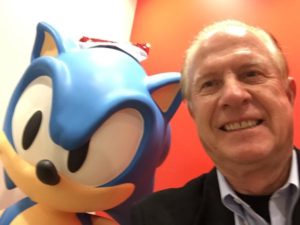
SEGA Nerds: How many times did you go through any of the people coming in and trying to buy SEGA at the time? I’m sure that happened a time or two?
Tom Kalinske: It was more the other side of it. It was more we would buy good developers. At one point we were looking at My 3DO, which I’m glad we didn’t do.
SEGA Nerds: You have a fun history with Trip Hawkins, too. What terms are you on today?
Tom Kalinske: Okay. He’s actually, he’s become very interested in using technology to improve ethics among children and morality and stop bullying. He actually has, I can’t remember the name of it, I should remember it. It would maybe show up if you Google him or look at Wikipedia, but it’s a site with games that deal with those areas. He spent a lot of time and money developing that. My understanding is he’s now trying to sell it. We’re on reasonably good terms.
SEGA Nerds: It’s funny how your careers are kind of aligned and you’re both now … You were in the video games and now you’re both kind of doing the edutainment for kids and it’s kind of funny.
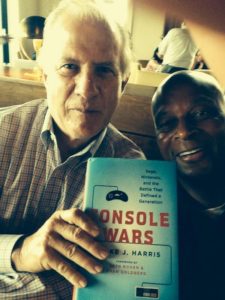
Tom Kalinske: I forgot to mention, I just went on the Gazillion Board. They have the Marvel licence for big multi-player online game. We’re trying to move it from being just a PC game to move it onto consoles.
SEGA Nerds: Do you think you would consider getting back into more of the game industry at this point, or are you more interested in kind of doing other endeavors?
Tom Kalinske: That’s a good question. I got so wrapped up in doing education, I hadn’t really thought about it. Frankly, no one suggested anything and I haven’t thought about it myself to restart something. I love the business, so …
SEGA Nerds: So you left around the time of the Saturn.
Tom Kalinske: Yeah, I left right after the Saturn launch, which I didn’t want to do.
SEGA Nerds: That was the perfect time to get out of there.
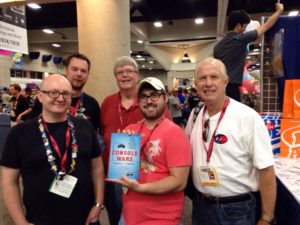
Tom Kalinske: I actually should have left before it.
SEGA Nerds: That was a sinking ship at that point. Did they tell you they were going to launch the Saturn into retail stores the moment they announced it?
Tom Kalinske: They ordered me to. That was one of the things … Up to then I was able to do what I wanted, pretty much. Then they started forcing me to do these crazy things that made no sense. Like first of all, I thought introducing it in the fall was too early. I wanted to keep Genesis a lot longer. I didn’t think the machine and the software would be ready.
Then they said, “Oh by the way, you’re going to introduce it at E3 in June.” They didn’t have enough hardware and there was hardly any software, and it was buggy software. It was really a dumb idea.
SEGA Nerds: It seemed, fundamentally, they seemed like from an infrastructure standpoint within the system itself they thought 2D gaming was still going to be kind of the big thing; whereas the industry kind of took a turn toward 3D gaming. They had had a hard time keeping up with PlayStation at that point in time with the 3D games and stuff like that. You weren’t a fan of the [32X] though, right?
Tom Kalinske: No.
SEGA Nerds: But you were a fan of SEGA CD?
Tom Kalinske: I was a fan of SEGA CD because I knew eventually we had to go to optical disk and we had to learn how to do it. You have to start somewhere, so we started with Tom Zito and the games he had been working on, on CD-ROM. There were so many tricks to that in those days. Talking about this downloading, well we didn’t have anything to download into so you had to program the game so you could just literally go ahead to the next part of the disk. If you move them around on the disk, you took too long. The lag times were horrendous.
We had this, I’ve mentioned to you before, we had this vision of full-motion video and stereo, rock music and 3D animation and putting it all together. “Gosh, that’s going to be great!” Well, it depends on how the game plays.
SEGA Nerds: What was it? Was it Digital Productions? That was the company, right? They were the ones that put all those kind of FMV-style games out there. They kind of have a soft spot in my heart just because it was a time of change and everybody didn’t really know what was going to happen. You’ve got these new bit consoles coming out that were supposed to open up the window. Everyone thought FMV games were going to be the big change where everyone was going to be going. You guys really went … then 3DO was another, they were real big in the FMV …
Tom Kalinske: Sure, and they were $500 consoles.
SEGA Nerds: Wow! But it would be interesting to see where the industry would be today had SEGA Japan allowed you to make that deal with Sony. We were talking about it earlier. That would be just a complete industry change at this point.
Tom Kalinske: Yeah, it would have been. I think we changed the industry a lot as it is, but that would have really been something. It would have made a hell of a lot of sense.
SEGA Nerds: Oh, absolutely. The thing that I don’t understand, but I guess I understand whether it’s the Japanese culture. I don’t know if it’s … Is it the pettiness? They don’t want you to do your own thing. You were successful, right?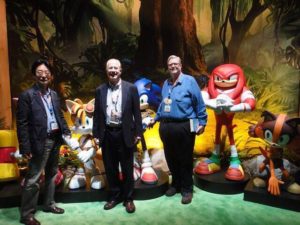
Tom Kalinske: This is something I didn’t understand until really after I left and started thinking back on it. I didn’t realize that we were so successful in the United States and Europe that the chairman, CEO Mr. Nakayama, used to walk into a Monday meeting and beat the hell out of the Japanese staff for not doing as well as Tom … He used to use the phrase, “Tom is doing well in the United States.”
Imagine if you’re through seating in that. You’re middle management, you’re marketing directors, you’re product developers, you’re engineers. Every Monday this guy’s walking in and beating you up about how lousy you’re doing and why can’t you do better? Why can’t you be more like Tom? After awhile you grow to hate Tom. I just didn’t realize that.
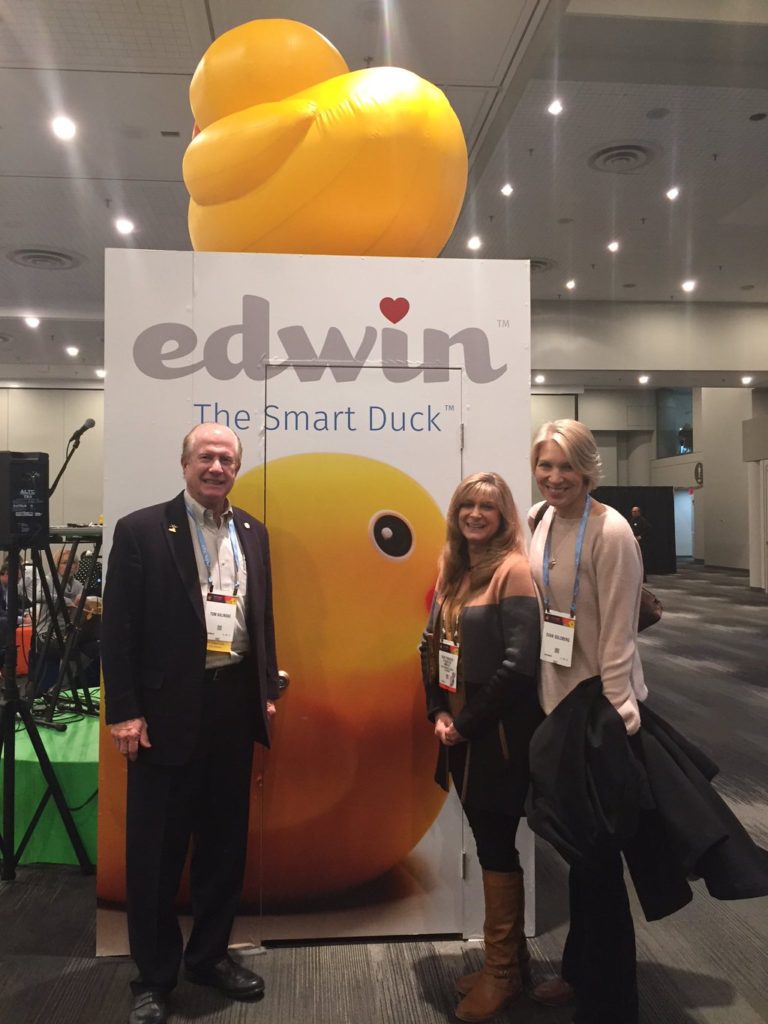
SEGA Nerds: That’s the thing I don’t understand. They’re still technically one company on different continents and you’d think they want the company to do well.
Tom Kalinske: You would. That’s what fooled me. I assumed we were all on the same team and we wanted the same thing. We wanted success for the overall company. But again, human nature is human nature and if you’re getting beat up all the time. They never got above a 10% share in Japan the time that I was with SEGA.
SEGA Nerds: They had the content. The games were there.
Tom Kalinske: The games were there.
SEGA Nerds: I think it was all marketing.
Tom Kalinske: It was marketing.
SEGA Nerds: Bad decision making. SEGA, the headquarters where they just moved from, that was the same place where you had left, right? Was that the last headquarters you had been …
Tom Kalinske: In the United States, you mean?
SEGA Nerds: Right, in California.
Tom Kalinske: No. I was in Redwood City and we had a very large complex in Redwood City. Actually, I still, strangely enough, have an office back there now. Different ownership. After I left, they moved to San Francisco, downtown San Francisco. That building now is the home of Zynga. SEGA Networks is over on Market or Mission.
SEGA Nerds: I’ve heard that location is just a weird one to have, as well, for a video game company. It’s kind of like an art district or something like that in that area? So it’s kind of strange for …
Tom Kalinske: It is, as opposed to Redwood City where we were right next to EA and Sony was one exit over. You had a bunch of video game companies all in the same area. You could communicate with one another, you could hire from one another.
SEGA Nerds: Did they just outgrow that location?
Tom Kalinske: No, again what’s his name who came after me didn’t like commuting to Redwood City, Bernie Stolar? So he moved it into the City. Much more expensive than Redwood City.
SEGA Nerds: I was going to say, probably more expensive.
Tom Kalinske: That didn’t help them any.
SEGA Nerds: Thanks again for your time, Tom. We have to do this again soon!
Tom Kalinske: It was my pleasure; thank you.
We’d like to thank Tom for taking the time out of his busy schedule to sit down and discuss his history with the Toy Fair and much more. We look forward to to chatting with him again next year ! 😉
You can read all about Tom Kalinske’s adventures as the President of SEGA of America in The Console Wars by Blake Harris, which you can check out by clicking here.

